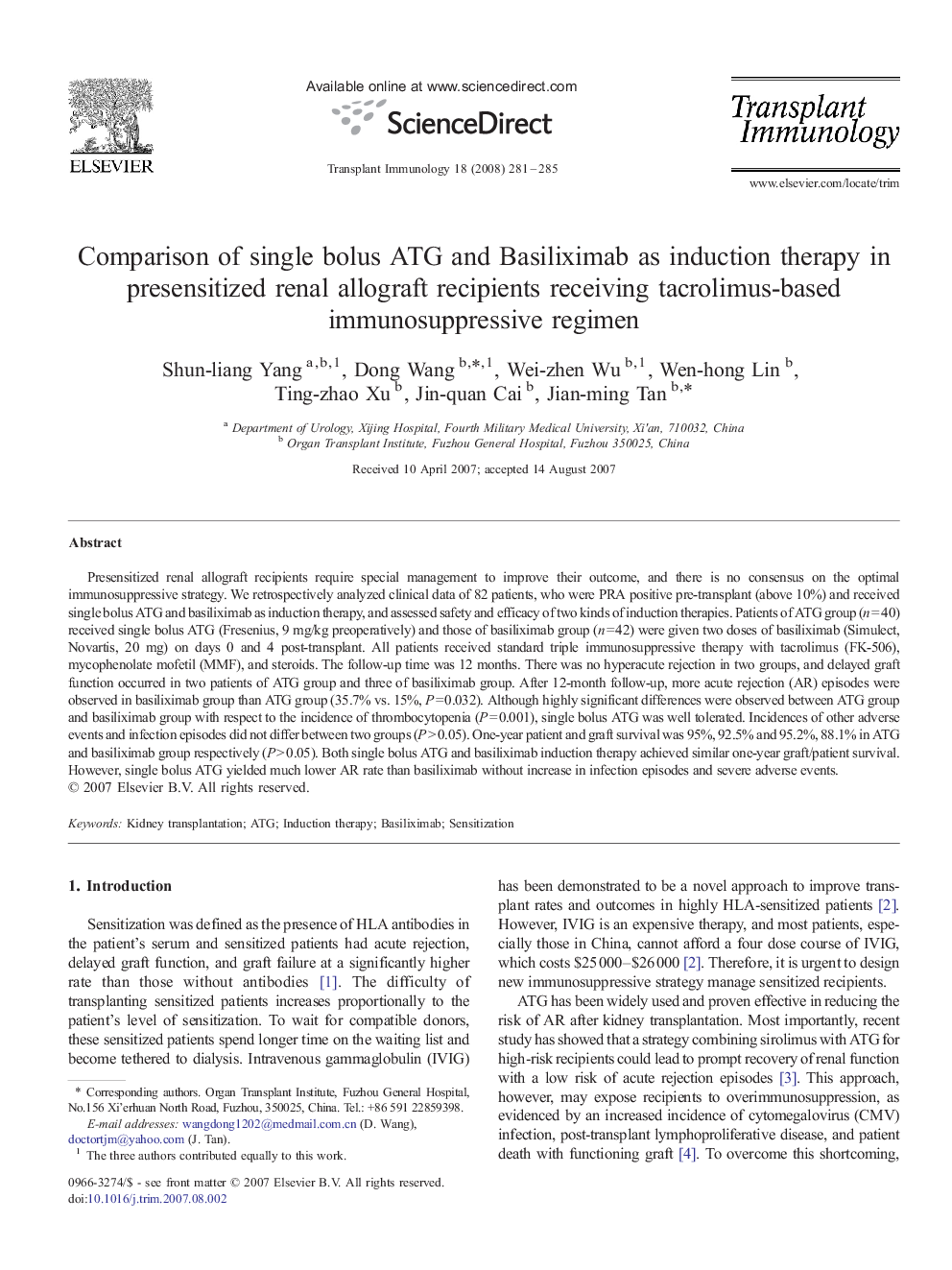| Article ID | Journal | Published Year | Pages | File Type |
|---|---|---|---|---|
| 3392414 | Transplant Immunology | 2008 | 5 Pages |
Presensitized renal allograft recipients require special management to improve their outcome, and there is no consensus on the optimal immunosuppressive strategy. We retrospectively analyzed clinical data of 82 patients, who were PRA positive pre-transplant (above 10%) and received single bolus ATG and basiliximab as induction therapy, and assessed safety and efficacy of two kinds of induction therapies. Patients of ATG group (n = 40) received single bolus ATG (Fresenius, 9 mg/kg preoperatively) and those of basiliximab group (n = 42) were given two doses of basiliximab (Simulect, Novartis, 20 mg) on days 0 and 4 post-transplant. All patients received standard triple immunosuppressive therapy with tacrolimus (FK-506), mycophenolate mofetil (MMF), and steroids. The follow-up time was 12 months. There was no hyperacute rejection in two groups, and delayed graft function occurred in two patients of ATG group and three of basiliximab group. After 12-month follow-up, more acute rejection (AR) episodes were observed in basiliximab group than ATG group (35.7% vs. 15%, P = 0.032). Although highly significant differences were observed between ATG group and basiliximab group with respect to the incidence of thrombocytopenia (P = 0.001), single bolus ATG was well tolerated. Incidences of other adverse events and infection episodes did not differ between two groups (P > 0.05). One-year patient and graft survival was 95%, 92.5% and 95.2%, 88.1% in ATG and basiliximab group respectively (P > 0.05). Both single bolus ATG and basiliximab induction therapy achieved similar one-year graft/patient survival. However, single bolus ATG yielded much lower AR rate than basiliximab without increase in infection episodes and severe adverse events.
